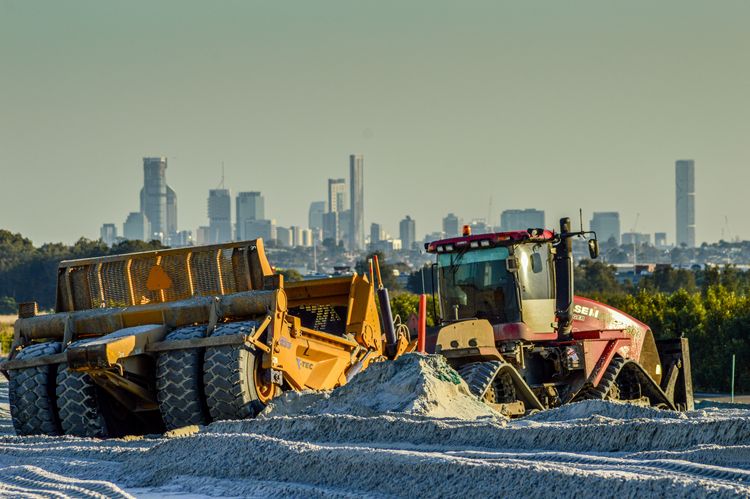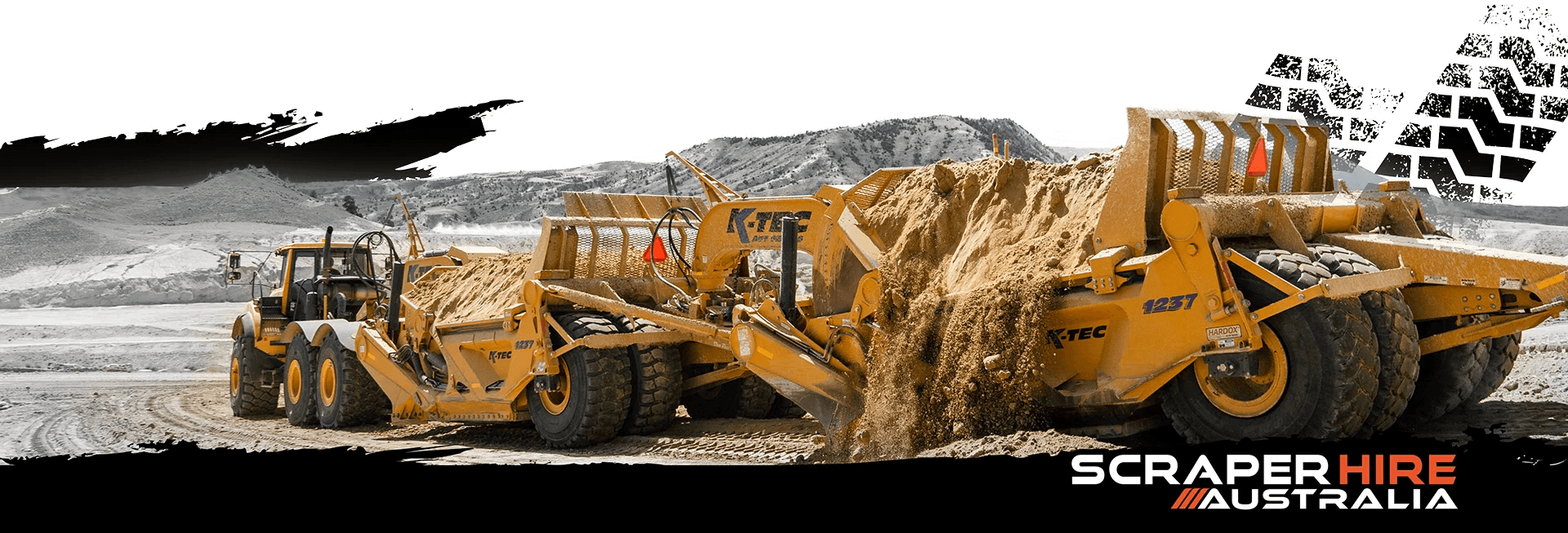In the realm of construction and earthmoving, sustainability has emerged as a guiding principle for a greener and more responsible future. As industries strive to balance progress with environmental stewardship, innovative solutions are being sought to minimize ecological impact. One such solution lies in the evolution of earthmoving scrapers – the workhorses of excavation. In this exploration, we delve into the remarkable strides made in eco-friendly earthmoving through modern scraper technologies, showcasing how these machines are driving sustainability forward.
The Environmental Imperative: Sustainability in Earthmoving
In an era characterized by heightened environmental consciousness, the construction and earthmoving industries face the imperative of adopting sustainable practices. The traditional methods of earthmoving, marked by high fuel consumption, emissions, and soil disruption, pose significant challenges to ecological balance. The urgency to reduce the environmental footprint has prompted a paradigm shift towards sustainability-driven innovations.
Sustainability in earthmoving entails minimizing adverse environmental effects while maximizing operational efficiency. This requires a holistic approach that encompasses every stage of excavation, from initial planning to final restoration. Modern earthmoving practices prioritize resource conservation, emission reduction, and habitat preservation, paving the way for a more harmonious coexistence with nature.
Modern Scrapers: Engineering for Sustainability
Central to the evolution of eco-friendly earthmoving are modern scraper technologies engineered with sustainability in mind. These innovative machines represent a departure from their conventional counterparts, incorporating design enhancements and advanced systems to achieve greater efficiency and environmental responsibility.
One of the standout features of modern scrapers is their fuel efficiency and emissions reduction. State-of-the-art engines and emissions control technologies contribute to lower carbon footprints, making scraper operations less environmentally taxing. Furthermore, the integration of renewable energy sources and hybrid technologies is gaining traction, transforming scrapers into more eco-conscious workhorses.
Precision and Control: Minimizing Soil Disturbance
A critical aspect of eco-friendly earthmoving is the reduction of soil disturbance. Traditional excavation methods often result in extensive soil disruption and compaction, leading to long-term ecological repercussions. Modern scrapers, however, excel in achieving precision and control during excavation.
The science behind modern scraper technology enables operators to precisely shape the terrain while minimizing soil displacement. Advanced systems provide real-time feedback, enabling operators to make minute adjustments that result in smooth and accurate excavation. This level of precision contributes to the preservation of topsoil and vegetation, vital components of healthy ecosystems.
Material Efficiency: Reducing Waste and Resource Consumption
Resource efficiency is a cornerstone of sustainable earthmoving practices. Modern scrapers are equipped with features that optimize material usage, reducing waste and resource consumption. Efficient loading, hauling, and unloading mechanisms ensure that every cycle contributes to the maximum amount of material moved, minimizing the need for additional passes.
This material efficiency has a twofold impact: it reduces the overall demand for raw materials, and it decreases the energy required for excavation. By streamlining the process and minimizing waste, modern scrapers contribute to a more sustainable approach to earthmoving.
Emission Reduction Strategies: Mitigating Environmental Impact
One of the most significant advancements in modern scraper technology is the implementation of emission reduction strategies. Traditional scraper operations often generate substantial emissions, contributing to air pollution and climate change. Modern scrapers, however, incorporate technologies designed to mitigate their environmental impact.
Engine advancements, including cleaner fuel options and emissions control systems, significantly reduce harmful emissions. Scraper manufacturers are prioritizing the development of engines that adhere to strict emission standards, making eco-friendly scraper operations a reality. This reduction in emissions not only benefits the environment but also enhances the air quality in and around project sites.
Reclamation and Restoration: Revitalizing Landscapes
The impact of modern scrapers extends beyond the immediate construction phase. These machines are pivotal in reclamation and restoration efforts, breathing new life into landscapes that have been altered by human activity. Modern scraper-assisted projects often incorporate ecological restoration practices that focus on enhancing habitat quality and promoting biodiversity.
By reshaping terrain to its natural contours and restoring vegetation, modern scrapers contribute to the revitalization of ecosystems. This approach ensures that the land can once again support native flora and fauna, promoting environmental balance and sustainability.
Operator Training and Best Practices: Maximizing Sustainability
While modern scraper technologies offer remarkable advancements, the human element remains indispensable in achieving eco-friendly earthmoving. Skilled operators play a crucial role in optimizing scraper operations for sustainability.
Proper training equips operators with the knowledge to leverage advanced scraper features effectively. They learn to make real-time adjustments, operate at peak efficiency, and minimize unnecessary soil disturbance. A skilled operator’s ability to read and react to the terrain ensures that every pass is efficient and environmentally responsible.
Collaborations and Partnerships: Promoting Sustainable Earthmoving
The journey towards eco-friendly earthmoving is a collaborative endeavor that involves industry stakeholders, manufacturers, contractors, and environmental organizations. Collaborations and partnerships are driving innovation and pushing the boundaries of what is achievable in sustainable construction practices.
Manufacturers are actively collaborating with research institutions to develop cutting-edge scraper technologies that align with sustainability goals. Contractors are partnering with environmental organizations to ensure that scraper operations adhere to best practices that minimize ecological impact. These collaborations are instrumental in transforming eco-friendly earthmoving from a concept into a tangible reality.
Future Horizons: Advancing Sustainability in Earthmoving
As technology continues to evolve, the horizon of sustainability in earthmoving is brimming with potential. Artificial intelligence (AI) and automation are poised to play a pivotal role in optimizing scraper operations for maximum sustainability.
AI-driven scraper systems can analyze real-time data and make adjustments that optimize fuel consumption, emissions, and material usage. Automation ensures consistent and precise scraper movements, minimizing human error and maximizing efficiency. These advancements hold the promise of elevating eco-friendly earthmoving to new heights, contributing to a future where sustainability is the bedrock of construction practices.
Conclusion
Eco-friendly earthmoving is not a distant aspiration but a tangible reality being shaped by modern scraper technologies. These advancements reflect a profound commitment to environmental responsibility, combining engineering ingenuity with ecological stewardship. As we navigate the path towards a more sustainable future, modern scrapers stand as a testament to the power of innovation in the realm of construction and earthmoving.
At Scraper Hire Australia, we are at the forefront of eco-friendly earthmoving practices. Our state-of-the-art scraper fleet are equipped to deliver sustainable solutions for your projects. Join us in embracing the transformative potential of modern scrapers and advancing sustainability in the construction industry.




